Article & Photos: Dylan Leeder
You can surf in the mountains in the middle of winter.
That's right! the sport you typically imagine on warm, sandy, tropical beaches takes place on a river fed by glacier water and encompassed in a background of snow-covered Rocky Mountains. In January, the river hurls ice down its flowing waters, snow covers the thick, tree-lined coast and the mountains change constantly from the snowstorms looming in the distance. Amongst these intense conditions, surfers from all around the world are completely content surfing the zero-degree water as their wave has been handmade to perfection.
Ice Collecting Next to the Wave
Like many other Canadians, I've always had a strong interest in surfing, as it has always seemed to be the big brother to skateboarding. To me, it has always been the sport that inspired and helped create skateboarding. Without surfing there would be no skateboarding, so I've always had the utmost respect and curiosity for the sport and its culture. But, like most Canadians, I simply did not have the means to explore it.
Road to 'The Mountain' Wave
After stumbling across an Instagram post on surfing in Calgary, I quickly found myself in a frenzy of excitement and curiosity about what possible surf culture there actually was here. Within a short time, I discovered that not only can you surf downtown Calgary, but not far - in one of my absolute favorite places - there's a man-made wave called 'The Mountain'.
Located in Kananaskis, the wave is about an hour's drive from Calgary, 45 minutes outside of Banff and followed by a beautiful 10-minute hike through the forest. Because the river is fed by a dam, it can almost be completely stopped, making it an ideal place to construct a man-made wave. Created by the local company "Surf Anywhere", the wave has seemed to act as a benchmark for the company to help create a few additional waves around the world. For more information on the build and on the realities of creating a wave check out their site here: http://www.surfanywhere.ca
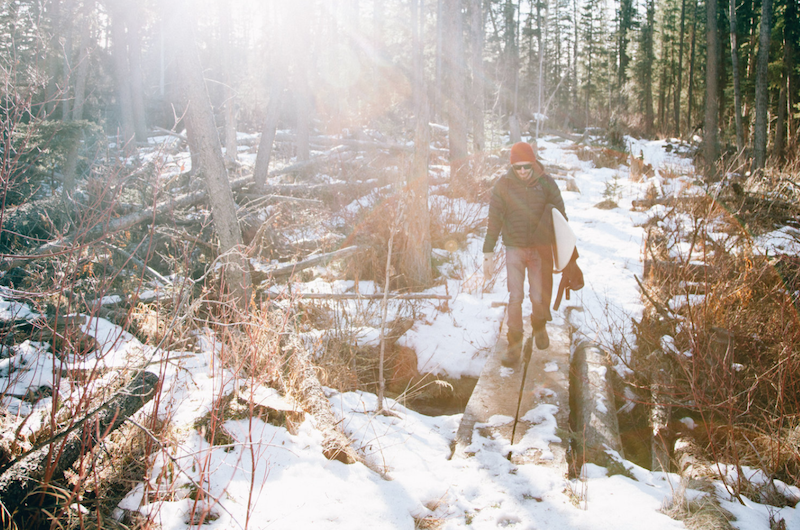
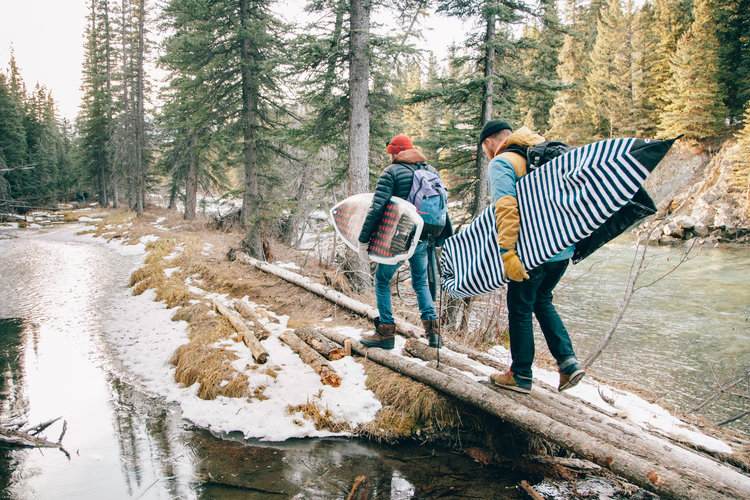
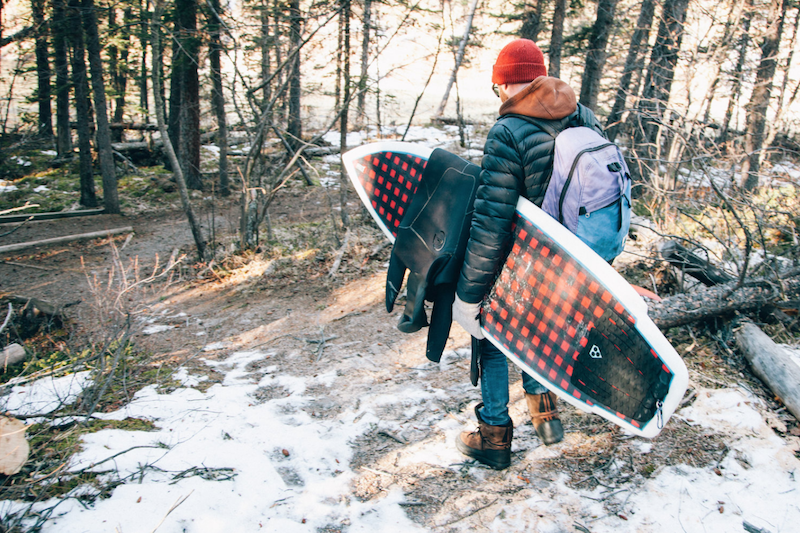
Adam in his element
During my first visit to 'The Mountain' (only a few hours after initially reading about the wave) I met Adam who, when not educating our youth in his sixth-grade class, spends his rare free time as an active member of the local surfing community. When he's not shaping the minds of our future or taking care of his newborn baby he spends his time shaping surfboards in his basement and expertly bringing them to life in the water.
Since the wave is fed primarily by glacier water, surfers typically need to wear wet-suits year-round but in the winter more specialized thicker suits are needed. Because of these requirements, and people's natural tendency to avoid freezing water, the winter tends to only bring out the committed die-hards of the sport. Although the number of surfers is reduced in the winter, the growing community still brings a surprising amount of people out in anticipation of the dam being opened.
The spot
One of the most remarkable and encouraging things I've noticed from my small glimpse into the community is the level of excitement and enthusiasm behind the project, the community, and surfing in general. Being an outsider and, at this point just an observer, I never felt awkward or unwelcome. In fact, I've been regularly encouraged and supported by complete strangers to get myself a board and into the water.
River Surfing Safety Tips
Adam, like many of the surfers here, has had considerable experience surfing around the world and was initially drawn to river surfing to maintain the sport he's come to love. From my perspective one of the most intriguing things about 'The Mountain', and river surfing in general, is it's ability to draw surfers from around the world who are absolutely committed to a sport they love. Obviously, Calgary is not a city typically associated with surfing but just considering the dedication and work behind creating the wave is a clear sign of the determination and the length these surfers will go to fulfill their passion.
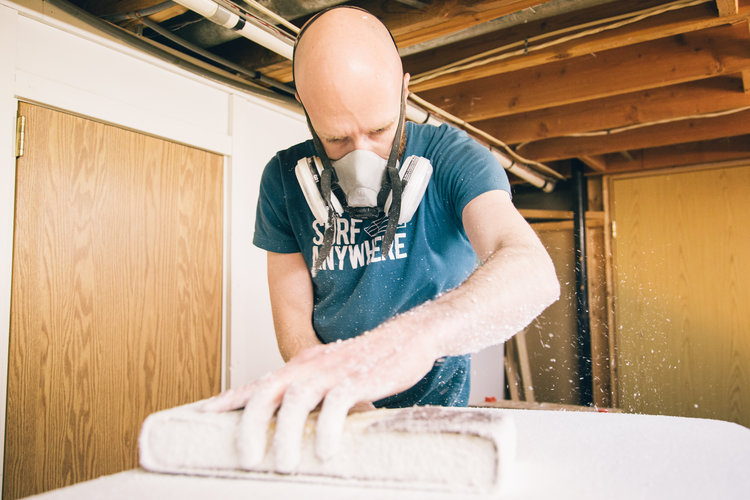
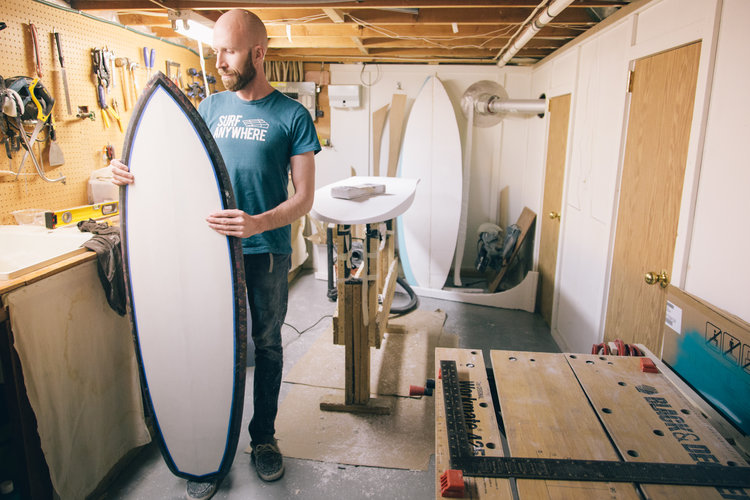
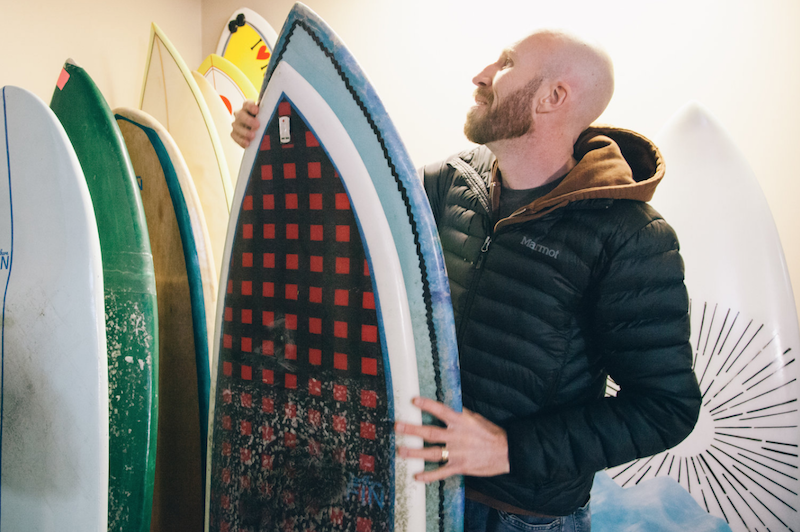
Although appealing, the Kananaskis wave still seems to present a greater learning curve than in the various levels of difficulty found in the ocean. To surf 'The Mountain' surfers are recommended to not wear leashes as they can get caught around the rocks and hold you down, which results in each surfer needing to chase the board down river after each fall. Aside from needing to be a strong swimmer you also need to be aware of the shallow waters and be sure to fall flat to avoid hitting the bottom. And, in the winter, there's always the risk of ice flying down into the wave. Although challenging there's still local companies to provide lessons and encouragement for new surfers.
Adam Catching his Board and Ice Down River
When asked about the wave and its characteristics, each surfer has only answered with positivity and excitement. Being able to create it the way they want has resulted in a consistent, fast-flowing wave that allows each surfer to show up and know what they're getting into. Possibly the biggest difference between this wave and ocean surfing is its consistency -- because the wave is controlled by a dam upstream the surfers are able to look online when it's 'on' and can show up knowing, because of the dam's control, that the wave will be the same speed and shape it typically is. These consistencies apparently play in favor of advancing skill levels as there is no waiting for swells, no unpredictable shape changes, and a familiarity that aids in learning new techniques.
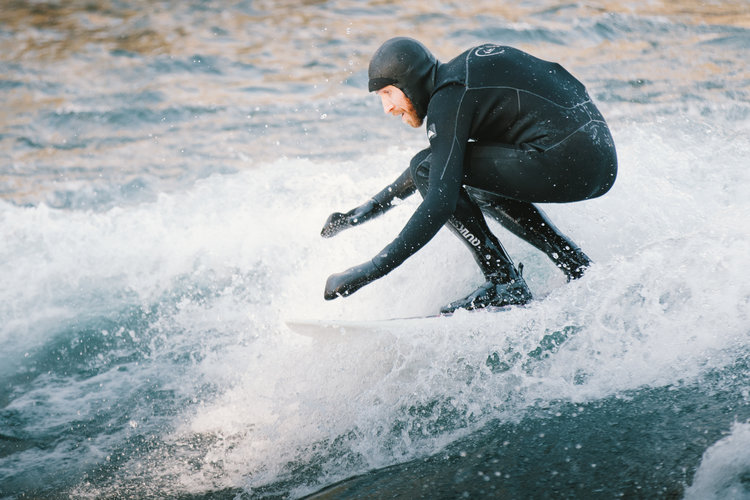
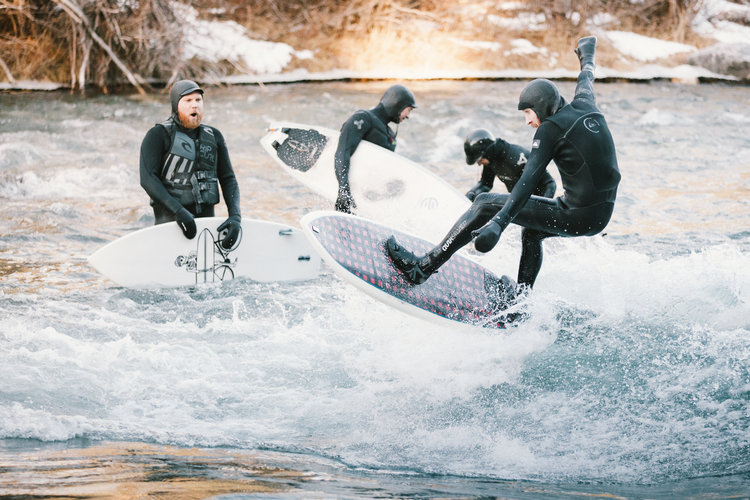
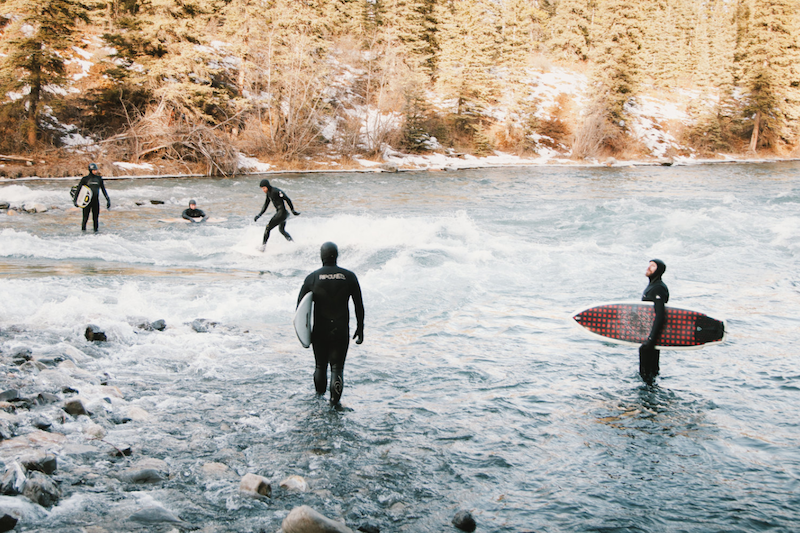
Creating a wave in a river can rightfully raise a few concerns about the well-being of the natural landscape but, like most sport lovers reliant on the natural world, this wave seems to have been created by individuals hyper-aware of the impact and conditions of the area they're working in. Before building the wave all of the government and environmental approvals were acquired and each and every precaution was taken, such as replacing the machinery's oil with biodegradable oil and examinations of many decade-long studies on fish's ability to swim up similar waves.
Having only spent a small amount of time at the wave I'm already excited to watch the growing popularity of surfing in Calgary and river surfing in general. Just with additional awareness that the wave exists comes new, excited surfers and an increase of popularity of yet another sport to enjoy in the area. With more popularity comes more demand for similar waves and, with that, comes the possibility of additional funding that could help further put Calgary on a map for something nobody would expect. Imagine if, one day, people knew Calgary as a popular 'surfing' destination.

